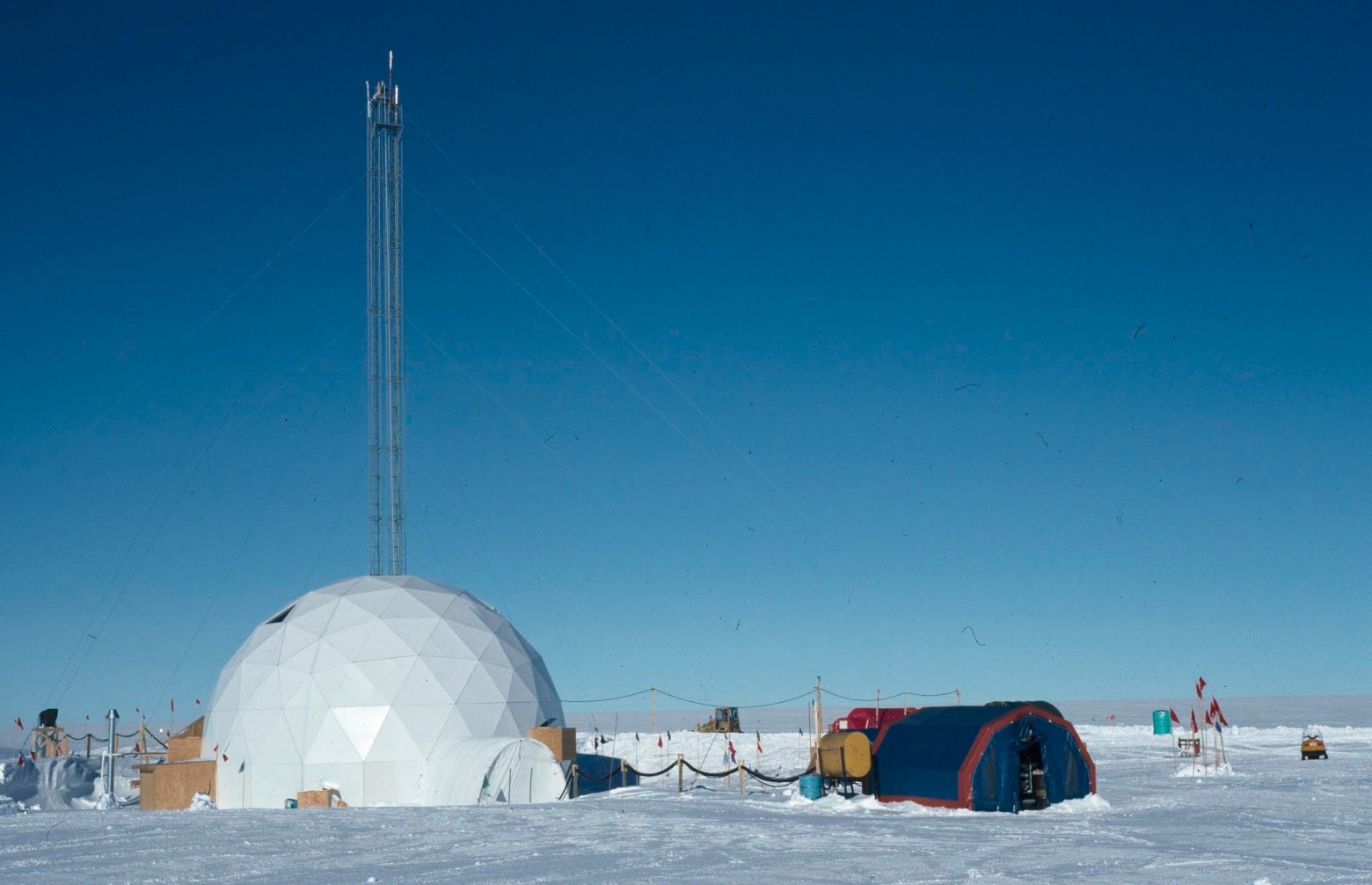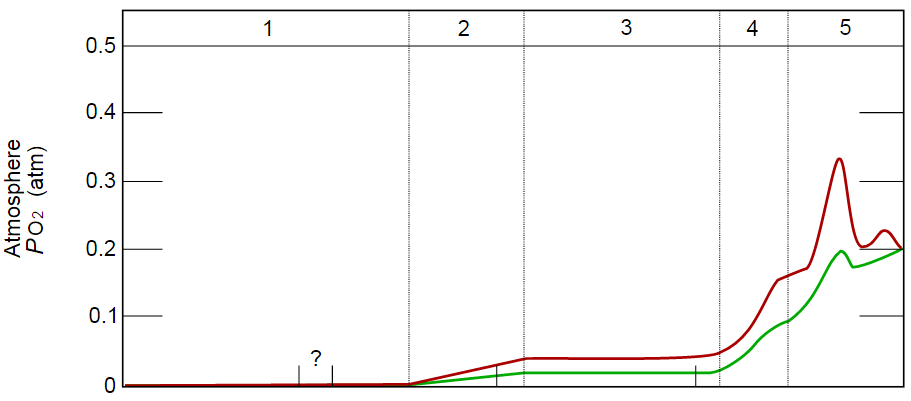Earth's atmosphere is slowly losing oxygen

The troposphere is the bottom very thin layer of the atmosphere with a height of 8-18 km, in which 80% of the mass of the Earth’s atmosphere is concentrated
The importance of atmospheric O 2 for biological and geochemical processes on Earth is extremely high. Therefore, scientists have long been studying how the oxygen content in the history of our planet has changed. This can be understood from the calculation of the partial pressure of O 2 and N 2 in the total atmospheric pressure.
Despite the long history of the issue, experts still do not have a unanimous opinion on the change in atmospheric pressure over the past 500 million years. Calculations differ to 0.2 atm (see diagram below). Even over the past few million years, there is no clear picture of how the atmospheric pressure, the partial pressure, and therefore the concentration of O 2 , have changed.
This is not a simple question, because animals from the atmosphere are constantly consumed by animals, plants and even stones. A group of scientists from Princeton University clarified this issue by examining the concentration of air bubbles in the ice cores of Greenland and Antarctica .
')

Ice core from a depth of 1837 m with visible annual layers
To date, ice cores - the most reliable and accurate source of data on atmospheric pressure. The maximum age of ice in cores is 800 thousand years, so research is limited to this time interval.

Extraction of ice cores at the research station "Vostok" in Antarctica
It turned out that during this time a rather stable leak of oxygen from the Earth occurs at a rate of approximately 8.4 ppm over a million years. In particular, over the past 800,000 years, the atmosphere has decreased by about 0.7% less oxygen.

The diagram on the left shows how the results of scientific modeling of the O 2 / N 2 ratio in the atmosphere and the partial pressure differ. The diagram on the right shows the change in partial pressure as measured by air bubbles in ice cores for 800 thousand years.
“We did these measurements more out of interest than to confirm the theory,” said one of the authors of the scientific work, Daniel Stolper. “We didn’t know what would happen: oxygen will increase over the years, decrease or remain at a constant level.”
The decrease in the amount of oxygen in the atmosphere is rather slow. Probably in the next millions of years, it does not threaten human life. But information about the nature of such cycles is very important for science. We need to know what factors influence the changes. This information can be used, including when terraforming Mars, when people start settling the Red Planet. Probably, we will have to increase the amount of oxygen in the Martian atmosphere.
There was also no oxygen on Earth for the first couple of billions of years. According to the most likely theory, about 2.4 billion years ago, the level of oxygen jumped sharply due to the activity of cyanobacteria , also known as blue-green algae. This period of drastic changes in the composition of the atmosphere with the subsequent restructuring of the biosphere and the global Huron glaciation in the history of the Earth is known as the oxygen catastrophe .

Blue-green algae - the reason why 2.4 billion years ago on Earth appeared oxygen in large quantities and there was a more advanced life
The same oxygen catastrophe can be arranged on Mars.
Scientists have not yet come to a common opinion why the Earth’s atmosphere is slowly losing oxygen. There are two hypotheses . One of them is due to an increase in the rate of erosion, as a result of which more rocks are extracted from the soil, which oxidize and bind more oxygen. Another theory is related to climate change: over the past few million years, the temperature has declined slightly, despite a sharp increase in recent decades. Due to the decrease in temperature, a chain of environmental reactions could be initiated, as a result of which more oxygen began to dissolve and bind in the oceans.
So far, all these are just hypotheses that should be tested.
At the moment, the Earth’s atmosphere contains 78.09% nitrogen, 20.95% oxygen, 0.93% argon, 0.039% carbon dioxide, and small amounts of other gases. It also constantly changes the concentration of water vapor, which is considered one of the main greenhouse gases. At ocean level, the concentration of H 2 O in the atmosphere is about 1%, and on average - about 0.4%. The total mass of the atmosphere is 5.5 × 10 18 kg, that is, 5.5 Zettagrams or 5.5 petatons.

The accumulation of oxygen in the atmosphere of the Earth . The green graph is the lower estimate of the oxygen level, the red is the upper estimate. 1. 3.85-2.45 billion years ago. 2. 2.45-1.85 billion years ago: the beginning of the production of oxygen and its absorption by the ocean and seabed rocks. 3. 1.85-0.85 billion years ago: the oxidation of rocks on land. 4. 0.85-0.54 billion years ago: all rocks on land are oxidized, oxygen accumulation in the atmosphere begins. 5. 0.54 billion years ago - now
The leakage of oxygen from the earth's atmosphere is slow. But scientists emphasize that in their study there is no data on changes in oxygen levels over the past 200 years, after the start of the Industrial Revolution, when people began to actively oxidize hydrocarbons from the earth's interior, gaining energy from this chemical reaction and associating large amounts of oxygen from the atmosphere. “We consume oxygen a thousand times more actively than before,” says Daniel Stolper. “Humanity has completely closed the [oxygen] cycle, burning thousands of tons of carbon ... This is another evidence that, through joint efforts, people are able to significantly accelerate the natural processes on Earth.”
The scientific work was published on September 23, 2016 in the journal Science (doi: 10.1126 / science.aaf5445).
Source: https://habr.com/ru/post/369705/
All Articles